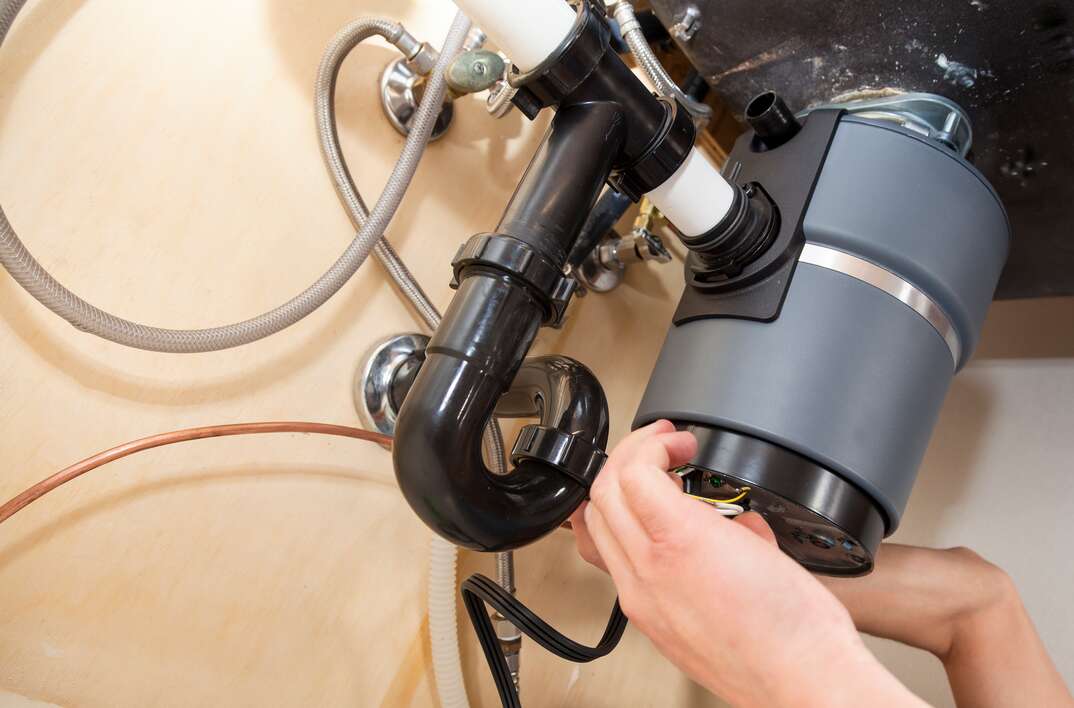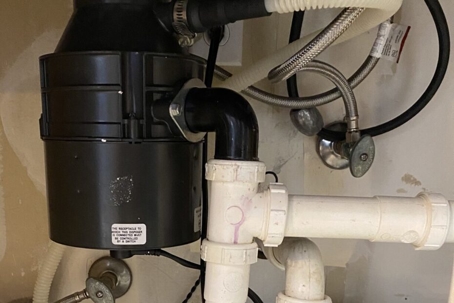Confirmed Ways to Fix a Leaking Waste Disposal Unit
Confirmed Ways to Fix a Leaking Waste Disposal Unit
Blog Article
Just about every person has their unique ideas involving How to fix a pretty consistent leak from my garbage disposal.

Garbage disposals are necessary cooking area home appliances that assist in throwing away food waste effectively. However, a leaking garbage disposal can be a frustrating and unpleasant problem to deal with. The good news is, several leaks can be repaired conveniently with a few easy steps. In this write-up, we will certainly discuss exactly how to fix a dripping garbage disposal successfully.
Intro
Garbage disposals are mounted under kitchen sinks and are made to shred food waste into smaller items, allowing it to pass through the pipes system easily. While these gadgets are usually reputable, leaks can happen in time as a result of wear and tear, loose connections, or damage to the unit.
Usual Causes of Leakages in Waste Disposals
Worn Seals and Gaskets
Seals and gaskets play a crucial function in stopping water from leaking out of the garbage disposal. Over time, these parts can wear away, bring about leakages around the disposal unit.
Loose Links
The connections between the waste disposal unit and the pipes system can come to be loosened over time, causing water to leak out throughout operation.
Cracks or Openings in the Disposal System
Physical damage to the garbage disposal, such as fractures or openings in the real estate, can also cause leaks.
Recognizing the Source of the Leakage
Before attempting to fix a dripping garbage disposal, it is essential to determine the source of the leakage. This can usually be done through aesthetic inspection or by performing simple tests.
Visual Inspection
Examine the waste disposal unit device thoroughly for any type of indicators of water leak. Pay close attention to areas around seals, gaskets, and link factors.
Examining for Leakages
One means to evaluate for leaks is by running water through the disposal system and checking for any type of noticeable indicators of leak.
Tools and Products Needed for Dealing With a Leaking Waste Disposal Unit
Before starting the fixing process, collect the essential devices and materials, including a screwdriver, adjustable wrench, plumbing technician's putty, substitute seals or gaskets, and epoxy or patching product for fixing fractures or openings.
Step-by-Step Overview to Taking Care Of a Leaking Waste Disposal Unit
Turn Off the Power
Before trying any type of fixings, ensure that the power to the waste disposal unit unit is switched off to avoid the risk of electrical shock.
Locate the Leakage
Identify the precise area of the leak and establish the cause.
Tighten Links
Use a wrench to tighten up any kind of loose links in between the disposal unit and the plumbing system.
Replace Seals or Gaskets
If the leakage is due to worn seals or gaskets, eliminate the old elements and change them with brand-new ones.
Patching Cracks or Holes
For fractures or holes in the disposal device, usage epoxy or an ideal patching material to seal the damaged area.
Testing the Garbage Disposal After Repair Work
When the repair service is total, check the waste disposal unit by running water with it to guarantee that the leak has been resolved.
Preventive Upkeep Tips to Prevent Future Leakages
To avoid future leaks, it is essential to carry out routine upkeep on your garbage disposal. This consists of keeping it clean, avoiding placing non-food products or difficult objects down the disposal, and occasionally looking for leaks or various other problems.
Conclusion
Finally, dealing with a leaking waste disposal unit is a fairly straightforward procedure that can be finished with fundamental devices and materials. By adhering to the steps detailed in this article and practicing preventative maintenance, you can keep your waste disposal unit in good working problem and prevent costly repairs in the future.
HERE’S HOW TO FIX YOUR GARBAGE DISPOSAL
WHAT TO DO IF SOMETHING IS STUCK IN YOUR GARBAGE DISPOSAL
If the impeller won’t turn, there’s probably something stuck in the disposal. It could be a steak bone or peach pit, although plumbers report pulling all sorts of inappropriate objects out of disposals, such as bottle caps or aluminum foil. Make sure power to the disposal is off, and look inside to see if you can see the source of the jam.
Never stick your fingers in a disposal. Pull out anything you see with tongs or pliers.
If the disposal still won’t work, it may be time to call a plumber or consider buying a new disposal. GEM Plumbing & Heating is here for all of your garbage disposal needs.
WHAT TO DO IF YOUR GARBAGE DISPOSAL DRAIN IS CLOGGED
Take everything out from underneath your sink and put a bucket or other container under your disposal to catch any water that drains out. Disconnect your disposal from the power supply. If it’s plugged into a wall outlet, unplug it. If it’s hardwired into an electrical box, go to the electrical panel and turn off the breaker for the disposal. Pour ¼ cup of baking soda into the drain, followed by ½ cup of white vinegar. Give the solution a few minutes to fizz and do its work. Look into the disposal with a flashlight to see if you can see an object that might be causing the clog. If you see it, remove it using tongs or pliers. MORE TIPS ON DEALING WITH A CLOGGED GARBAGE DISPOSAL
Never use drain cleaner in a garbage disposal. It can damage the plastic parts inside the disposal. You can also be splashed with the caustic liquid while working to clear the clog. Beware! Never stick your fingers into a garbage disposal. Trust us — not a good idea. In many instances, your dishwasher drains through your garbage disposal. This allows the disposal to grind any large food particles that may be drained out of your dishwasher. There are some jurisdictions, however, where the plumbing code prohibits such a connection. WHAT TO DO WHEN YOUR DISHWASHER DRAINS THROUGH THE DISPOSAL
Run some water in the sink so your plunger has at least a ½-inch of water to create a seal and plunge vigorously up and down several times. You may need to repeat this several times. Run hot water down the drain to clear any residue that remains.

Do you really like more info about Why Is ? Give a remark below. We would be interested to listen to your thoughts about this write up. In hopes that you visit us again in the future. Please take the opportunity to promote this content if you enjoyed reading it. Thanks a bunch for your time. Visit us again soon.
Check It Out Report this page